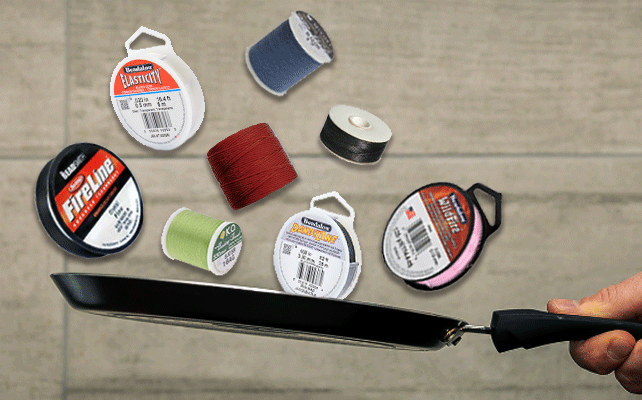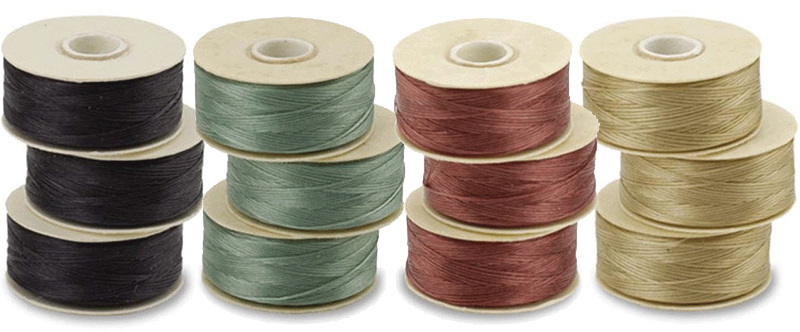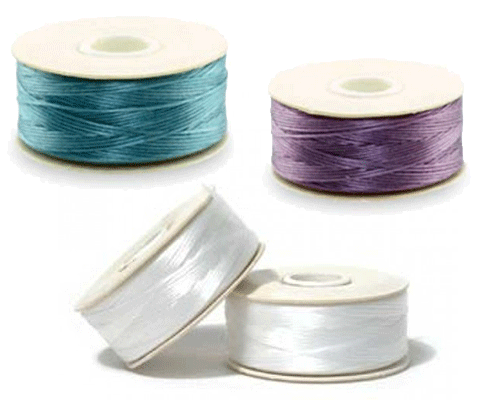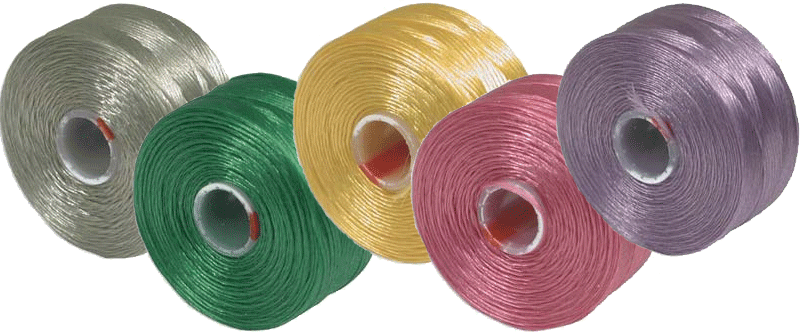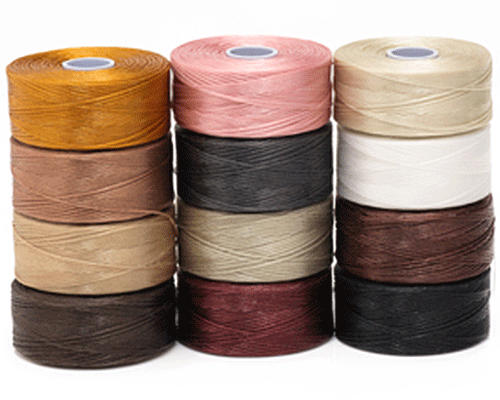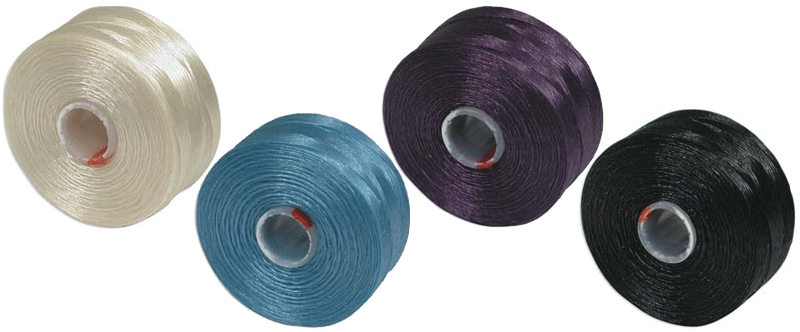Choosing the Right Beading Thread and Cord Nymo, S-Lon D and S-Lon AA by Damaris Ramenaden |
In this short blog series we've been looking at the different types of beading thread that's available to buy. This time we're looking at a small selection of nylon threads - Nymo, S-Lon D and S-Lon AA in particular.
Let's start with probably the most popular beading thread, especially amongst new beaders - Nymo.
As we mentioned above, Nymo is probably one of the most popular beading threads on the market today, especially where new beaders are concerned. This is perhaps due to how easy it is to find both in bead shops and online and how inexpensive it is compared to the more specialist thread such as FireLine and WildFire.
Nymo is a soft and supple nylon monocord, made by bonding, hair-thin continuous nylon filaments together. This creates a relatively strong thread with a nice soft drape, that's available in a wide range of colours. It won't untwist or separate, but it can fray at the ends if you're not careful when threading your needle.
Although Nymo is easy to use (you can cut it easily with normal beading or embroidery scissors), it does tangle quite easily, and it's not so easy to undo incorrect stitches or passes without damaging the thread.
It's not pre-conditioned and it is prone to stretching with use. We'd always recommend conditioning the thread before use with either a micro-crystalline wax or a beeswax, and then stretching it before beading. To do this, simply hold a small section of the thread between your fingers and pull it slightly - you should feel it 'give' a little. Then move along the thread and do this again, then continue all the way along. Be careful not to over stretch it as it can ultimately weaken the thread.
Nymo is great for any beading pieces that need a little flex and movement, such as tassels, fringes and spiral stitches. It's not so great, however, for use with beads that can have sharp edges (such as crystals or bugles as they will cut it), heavier glass or pearl beads (as they can stretch the thread over time and ruin the overall shape), pieces that have lots of thread paths (as it can be easily pierced or snagged by a needle) or have lots of passing through the same bead holes (again, it can be pierced, snagged or start fraying and fluffing up when it is overworked). A few bead passes is usually fine, but always take care not to pierce the thread - to minimise the risk of doing this, hold the existing thread tight against the inside of the bead hole as you pass your needle through again.
We'd also recommend not using it for the warp threads when looming (the vertical, stationery threads that run between each end of the loom) as it may stretch or not be strong enough to support the work. However, it is fine to use as a weft, as this process will not put undue strain on the thread itself.
We have Nymo in four different sizes:
Nymo O - 0.15mm / 0.006" * Nymo B - 0.20mm / 0.008" ** Nymo D - 0.30mm / 0.012" Nymo F - 0.35mm / 0.014" ** * White only ** Black & White only |
As noted earlier, Nymo is one of the cheapest beading threads you can buy, so it's great for novice beaders who want to practise their skills without investing heavily. It's also a great stash item for designers to have for working up small samples or for trialling ideas before creating the final project. And being so pocket-friendly it means you can invest in a variety of colours to see how they tone in or contrast with your beads.
Similar in price to Nymo is S-Lon D and S-Lon AA; let's take a look at them now. We'll start with S-Lon D.
S-Lon D is also known as Superlon and is another plied and bonded nylon thread that is strong and durable, with a lightweight almost 'silky' feel to it, probably because it is pre-conditioned (however you can condition it yourself too if you wish). It is also the same as C-Lon; the name change is because it has been manufactured by someone other than The BeadSmith, plus C-Lon comes on taller spools with greater yardage.
You may see Tex 45 when looking at S-Lon D, the Tex number is the weight (in grams) of 1,000m of thread. The higher the Tex number, the thicker the thread.
Like Nymo, it comes in a range of colours to match your projects without breaking the bank. And like Nymo, the thread itself won't untwist or separate, however it can also be pierced by a needle or snagged, especially if overworked, resulting in fraying or breaking. Plus you can cut S-Lon D with your normal scissors too, as it won't damage the blades.
There is a little stretch with this thread so it can be used for all loomworking or off-loom bead stitching to great effect. It's good for tassels and edging beadwork due to its softness and slight elasticity, but bear in mind you may have to consider your tension more if you want your piece to flex and move well. Again it's good for multiple thread passes and paths, but take care not to damage the existing thread when reworking an area.
The diameter of S-Lon D is 0.11mm / 0.004", making it similar to 4lb FireLine. Each reel is 78 yards long (approx. 71m long). We currently have 36 colours available. You can also buy pre-mixed colour sets too. |

